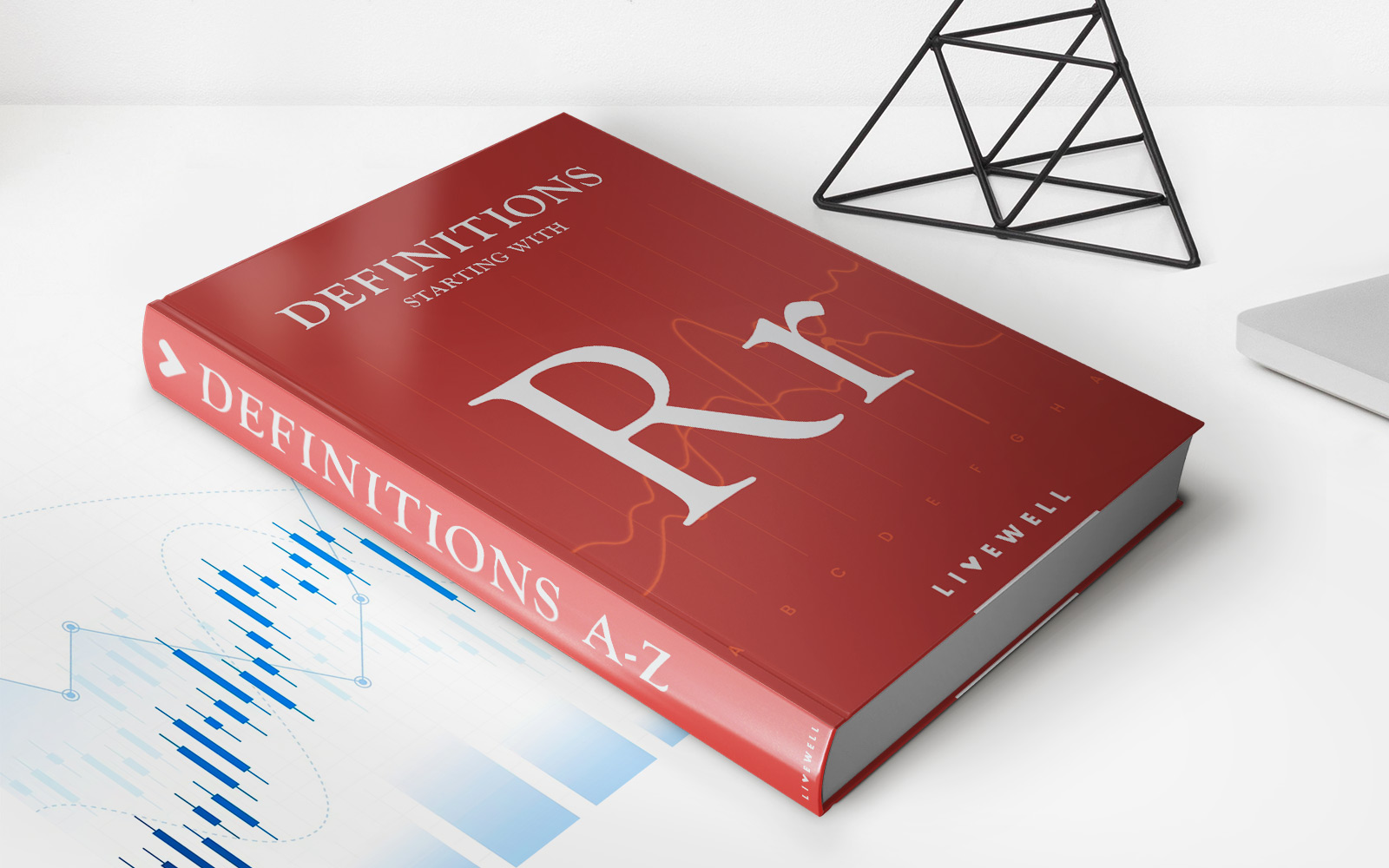

Finance
What Are Special Margin Requirements On Stocks
Published: January 18, 2024
Learn about special margin requirements on stocks and how they affect your finances. Stay informed and make smart investment decisions.
(Many of the links in this article redirect to a specific reviewed product. Your purchase of these products through affiliate links helps to generate commission for LiveWell, at no extra cost. Learn more)
Table of Contents
- Introduction
- Explanation of Margin Requirements
- Understanding Special Margin Requirements on Stocks
- Factors Impacting Special Margin Requirements
- Types of Special Margin Requirements on Stocks
- Examples of Special Margin Requirements on Stocks
- Risks and Benefits of Special Margin Requirements
- How to Calculate Special Margin Requirements on Stocks
- Compliance and Regulation of Special Margin Requirements
- Conclusion
Introduction
When it comes to investing in stocks, margin trading has become a popular option for many traders. Margin trading allows investors to borrow funds to trade stocks, using their existing securities as collateral. Margin requirements are rules set by the brokerage firm that determine how much collateral is needed to engage in margin trading. These requirements ensure that investors have enough capital to cover potential losses and protect the brokerage from default.
While margin requirements are standard for most stocks, there are instances when special margin requirements are imposed on certain stocks. Special margin requirements are specific rules that apply to particular stocks based on various factors, such as the stock’s volatility, trading volume, or market conditions. These requirements are in place to mitigate the risks associated with trading certain stocks, ensuring that traders have sufficient funds to cover any potential losses.
Understanding special margin requirements on stocks is crucial for investors who engage in margin trading or are considering it as an investment option. This article will delve into the concept of special margin requirements, explore the factors that can impact these requirements, discuss different types of special margin requirements on stocks, provide examples of how they work in practice, highlight the risks and benefits associated with them, and explain how to calculate special margin requirements. Additionally, we will touch upon the compliance and regulation of special margin requirements.
By the end of this article, you will have a comprehensive understanding of special margin requirements on stocks, allowing you to make informed trading decisions and manage your investments effectively within the margin trading framework.
Explanation of Margin Requirements
Before diving into the specifics of special margin requirements on stocks, it’s important to have a clear understanding of margin requirements in general. Margin requirements are the minimum amount of funds or collateral that traders must deposit with their brokerage firm to trade on margin. This collateral acts as a form of security against any potential losses that may occur during the trading process.
Margin requirements are typically expressed as a percentage, known as the margin rate, representing the proportion of the total investment value that traders must contribute. For example, if the margin requirement is set at 50%, traders would need to deposit at least 50% of the total value of the trade as collateral.
By leveraging margin trading, investors can amplify their buying power and potentially increase their profits. However, it’s essential to note that margin trading comes with its inherent risks. When trading on margin, investors not only stand to gain higher returns but also face the possibility of greater losses. If the value of a trader’s portfolio falls below the minimum margin requirement, a margin call may be issued, requiring the trader to deposit additional funds or sell securities to restore the required margin level.
Margin requirements can vary depending on factors such as the type of security being traded, the volatility of the market, and the individual brokerage policies. These requirements are set by regulatory bodies, such as the Financial Industry Regulatory Authority (FINRA) in the United States, to ensure that traders have a sufficient buffer to cover potential losses and to maintain market stability.
Overall, margin requirements play a crucial role in risk management and protecting the interests of both traders and brokerage firms. It is important for investors to be aware of the margin requirements imposed by their brokerage and carefully consider their risk tolerance and financial position before engaging in margin trading.
Understanding Special Margin Requirements on Stocks
Special margin requirements on stocks refer to specific rules and conditions that apply to certain stocks when engaging in margin trading. These requirements are put in place to mitigate the risks associated with trading volatile or illiquid stocks. Unlike standard margin requirements, which are generally uniform across all stocks, special margin requirements take into account the unique characteristics and market conditions surrounding specific stocks.
One key factor that impacts special margin requirements is the volatility of the stock. Volatility refers to the extent of price fluctuations in a stock over a given period. Stocks with high volatility can experience significant price swings, which increases the risk for investors. To account for this added risk, specialized margin requirements may be imposed to ensure that traders have adequate collateral to cover potential losses resulting from these price fluctuations.
Another factor that influences special margin requirements is the liquidity of the stock. Liquidity refers to the ease with which a stock can be bought or sold without significantly impacting its price. Stocks that are less liquid often have wider bid-ask spreads and may be more difficult to trade. In such cases, brokerage firms may require higher collateral to ensure that traders can exit their positions without causing substantial market disruption or incurring significant losses due to the illiquid nature of the stock.
Moreover, market conditions can also play a role in determining special margin requirements on stocks. During periods of heightened market volatility or uncertainty, brokerage firms may increase margin requirements across the board to reduce the overall risk exposure of their clients and maintain market stability. These temporary adjustments to margin requirements are intended to protect traders from potential losses during turbulent market conditions.
Understanding special margin requirements on stocks is crucial for traders engaging in margin trading, as it allows them to assess the level of risk associated with specific stocks and determine the amount of collateral needed to meet the special margin requirements. By being aware of these requirements, investors can make more informed trading decisions and manage their investments effectively within the margin trading framework.
Factors Impacting Special Margin Requirements
Several factors can influence the imposition of special margin requirements on stocks. These factors are taken into consideration to ensure that traders have sufficient collateral to cover potential risks and losses associated with specific stocks. Understanding these factors can help traders better assess the level of risk involved and make informed decisions when engaging in margin trading.
1. Volatility: The volatility of a stock is a key factor impacting special margin requirements. Stocks with higher volatility tend to experience larger price swings, which increases the risk of significant losses for investors. Therefore, stocks with higher volatility levels may require higher margin requirements to account for the increased risk.
2. Liquidity: The liquidity of a stock refers to how easily it can be bought or sold without significantly impacting its price. Less liquid stocks typically have wider bid-ask spreads and can be more challenging to trade. Given the potential difficulties in entering or exiting positions, brokerage firms may impose higher margin requirements on illiquid stocks to protect traders from potential losses resulting from the limited availability of buyers or sellers.
3. Market Conditions: The overall market conditions can also influence special margin requirements. During periods of heightened market volatility or uncertainty, brokerage firms may increase margin requirements on all stocks to manage the increased risk exposure. These adjustments help protect traders from potential losses during turbulent market conditions and maintain market stability overall.
4. Company Earnings and News: Specific company earnings announcements or significant news events can impact the special margin requirements for stocks. Positive or negative news regarding a company can lead to increased volatility or liquidity concerns. In such cases, brokerage firms may adjust the margin requirements to reflect the heightened risks associated with the stock.
5. Regulatory Requirements: Regulatory bodies, such as FINRA in the United States, play a significant role in establishing margin requirements. These organizations monitor market conditions and set guidelines to ensure the stability and integrity of the financial markets. As a result, changes in regulatory requirements can impact special margin requirements on stocks.
By considering these factors, brokerage firms can tailor their special margin requirements to each stock’s unique characteristics and market conditions. Traders should stay informed about these factors and any updates to margin requirements to effectively manage their risk exposure and make informed trading decisions.
Types of Special Margin Requirements on Stocks
There are several types of special margin requirements that can be imposed on stocks when engaging in margin trading. These requirements are designed to mitigate risks associated with specific stocks and ensure that traders have sufficient collateral to cover potential losses. Understanding the different types of special margin requirements can help investors effectively manage their margin trading activities and make informed investment decisions.
1. Initial Margin: This is the minimum amount of collateral that traders must deposit with their brokerage firm at the outset of a margin trade. It is usually expressed as a percentage of the total trade value. Initial margin requirements may vary based on factors such as the volatility of the stock, the liquidity of the market, and regulatory guidelines.
2. Maintenance Margin: Once a margin trade is initiated, traders must maintain a certain level of equity in their margin account known as the maintenance margin. The maintenance margin requirement is typically lower than the initial margin requirement. If the equity in the margin account falls below the maintenance margin threshold, a margin call may be triggered, requiring the trader to deposit additional funds or sell securities to restore the required margin level.
3. Volatility-Based Margin: Some stocks exhibit higher levels of volatility, which can lead to increased risk for traders. In such cases, brokerage firms may implement special margin requirements based on the volatility of the stock. Higher volatility stocks may require larger margin deposits to account for potential price swings and increased risk exposure.
4. Concentrated Position Margin: When traders have a significant portion of their portfolio invested in a single stock or a small number of stocks, brokerage firms may impose concentrated position margin requirements. These requirements seek to mitigate the risk of having an extremely concentrated portfolio. Traders may be asked to allocate a higher percentage of their capital to the concentrated position to account for the higher risk associated with a lack of diversification.
5. Overnight Margin: Margin requirements can differ between intraday trading and overnight positions. Overnight margin requirements are typically higher due to the increased risks associated with holding positions overnight. These requirements account for potential market gaps, news events, and changes in market conditions that can occur while the market is closed.
6. Event-Driven Margin: Specific corporate events, such as mergers, acquisitions, or earnings announcements, can impact a stock’s price and increase volatility. In response to these events, brokerage firms may implement event-driven margin requirements. These requirements aim to account for the heightened risk associated with trading stocks during significant corporate events.
Understanding the different types of special margin requirements on stocks allows traders to assess the level of risk associated with specific stocks and adjust their trading strategies accordingly. It’s important for investors to stay informed about these requirements and monitor any changes that may occur to manage their margin trading activities effectively.
Examples of Special Margin Requirements on Stocks
To provide a clearer understanding of how special margin requirements on stocks work in practice, let’s explore a few examples:
1. High Volatility Stock Margin Requirement: Suppose there is a stock known for its high volatility due to frequent news releases and drastic price fluctuations. To protect traders from potential losses resulting from the stock’s volatility, a brokerage firm may impose a special margin requirement of 70% instead of the standard 50%. This means that traders looking to engage in margin trading with this particular stock would need to deposit at least 70% of the total trade value as collateral.
2. Market Uncertainty Margin Requirement: During a period of heightened market uncertainty, such as economic downturns or political instability, brokerage firms may increase margin requirements across the board. For example, the maintenance margin requirement may be raised from 25% to 40% for all stocks to mitigate overall risk exposure. This adjustment ensures that traders have a higher level of collateral, reflecting the increased potential for market volatility and additional risks associated with economic uncertainties.
3. Concentrated Position Margin Requirement: Let’s consider a scenario where a trader has a significant portion of their portfolio allocated to a single stock. Recognizing the risk of having an extremely concentrated position, the brokerage firm may impose a concentrated position margin requirement of 70% for that particular stock. This means that the trader would need to deposit 70% of the total value of the stock as collateral rather than the standard margin requirement for other stocks in their portfolio.
4. News Event Margin Requirement: Suppose a company is about to release its earnings report, which is expected to greatly impact the stock’s price and increase market volatility. Ahead of the earnings announcement, brokerage firms may implement an event-driven margin requirement of 60% for margin traders. This increased margin requirement ensures that traders have adequate collateral to cover potential price fluctuations that may occur as a result of the earnings report.
These examples demonstrate how special margin requirements can vary based on factors such as stock volatility, market conditions, concentration of positions, and specific news events. It’s important for traders to be aware of any special margin requirements imposed by their brokerage firms for specific stocks and factor them into their trading strategies.
Risks and Benefits of Special Margin Requirements
Special margin requirements on stocks, while designed to mitigate risks, come with their own set of advantages and potential drawbacks. Understanding the risks and benefits associated with these requirements is crucial for traders engaging in margin trading.
Risks:
– Increased Losses: Special margin requirements can help protect traders from potential losses by ensuring sufficient collateral. However, if the market moves against a trader’s position, the additional margin requirement may not be enough to cover the losses. This can lead to significant financial losses beyond the initial investment.
– Margin Calls: Special margin requirements often have higher thresholds, meaning traders need to maintain higher levels of collateral. If the account value falls below these levels, a margin call can be triggered, requiring the trader to deposit additional funds or sell securities to restore the required margin level.
– Limited Flexibility: Special margin requirements can limit the flexibility of traders by tying up a large portion of their capital as collateral. This can reduce the available funds for other investment opportunities and restrict diversification possibilities in the portfolio.
Benefits:
– Risk Management: Special margin requirements aim to mitigate risks associated with specific stocks, such as high volatility or concentration of positions. By requiring additional collateral, these requirements help traders manage risk exposure and potentially prevent excessive losses.
– Increased Access to Capital: Margin trading, including the application of special margin requirements, allows traders to access additional capital beyond their available cash. This can enhance their buying power and potentially amplify their returns when used judiciously.
– Trading Opportunities: Special margin requirements can create opportunities for traders interested in specific stocks with higher volatility or news-driven price movements. By meeting the requirements, traders can engage in margin trading to potentially profit from market fluctuations.
It is important for traders to carefully consider the risks and benefits associated with special margin requirements. Diligent risk management, comprehensive understanding of the market, and a disciplined trading strategy are essential in navigating the potential pitfalls and enjoying the benefits of margin trading.
How to Calculate Special Margin Requirements on Stocks
Calculating special margin requirements on stocks involves assessing specific factors related to a stock’s volatility, liquidity, and other market conditions. Although the precise calculation may vary depending on the brokerage firm and regulatory guidelines, here are the general steps involved:
1. Determine the Margin Rate: The margin rate represents the percentage of the investment value that traders must deposit as collateral. Depending on the stock and its associated risks, the margin rate can be higher or lower. It is typically determined by the brokerage firm and regulatory guidelines.
2. Evaluate the Stock’s Volatility: Assess the historical price volatility of the stock. This can be done by examining factors such as price fluctuations, average daily range, and standard deviation. Higher volatility stocks generally require higher margin requirements to account for potential losses due to price swings.
3. Consider the Stock’s Liquidity: Evaluate the liquidity of the stock by analyzing its trading volume, bid-ask spread, and overall market activity. Less liquid stocks may require higher margin requirements due to the potential challenges of entering or exiting positions without significant price impact.
4. Apply any Special Requirements: Consider any specific requirements imposed by the brokerage firm based on factors such as concentration of positions or upcoming news events. These requirements may increase the margin rate or impose additional collateral obligations.
5. Calculate the Special Margin Requirement: Multiply the stock’s total value by the margin rate determined in the previous steps. This will give you the minimum amount of collateral required for that specific stock. For example, if the margin rate is 60% and the stock’s total value is $10,000, the special margin requirement would be $6,000.
It is important to note that special margin requirements can change over time, reflecting market conditions and other factors. Traders should stay informed about any updates or adjustments to special margin requirements by regularly reviewing information provided by their brokerage and regulatory bodies.
While this provides a general framework, it is essential for traders to consult with their brokerage firm or leverage margin calculation tools provided by their broker to obtain accurate and up-to-date information on the specific margin requirements for each stock.
Compliance and Regulation of Special Margin Requirements
Special margin requirements are subject to compliance and regulation to ensure the stability and integrity of financial markets. Regulators, such as the Financial Industry Regulatory Authority (FINRA) in the United States, play a vital role in setting guidelines and overseeing the implementation of margin requirements.
Brokerage firms are required to adhere to specific compliance regulations when imposing special margin requirements on stocks. These regulations aim to protect investors and promote fair and transparent trading practices. Some key aspects of compliance and regulation related to special margin requirements include:
1. Regulatory Guidelines: Regulatory bodies like FINRA establish general margin requirements to ensure a minimum level of capital adequacy and risk management. These guidelines set forth the maximum leverage ratios, margin rates, and collateral requirements that brokerage firms must adhere to when offering margin trading to investors.
2. Risk Assessment: Brokerage firms are responsible for assessing and managing the risks associated with special margin requirements. They must assess the volatility, liquidity, and other factors specific to each stock to determine appropriate margin rates and minimum collateral requirements. Regular risk assessments are crucial to ensure that special margin requirements accurately reflect the risk exposure and protect the interests of traders.
3. Investor Protection: Compliance with regulations is essential to protect the interests of investors. Brokerage firms must provide transparent and clear information about special margin requirements to their clients, including the calculation methodology, potential risks, and consequences of non-compliance. This helps investors make informed decisions and manage their trading activities effectively.
4. Monitoring and Enforcement: Regulatory bodies monitor brokerage firms to ensure compliance with margin requirements and other regulations. Regular audits and inspections are conducted to assess the adherence of brokerage firms to the prescribed guidelines. Non-compliance can result in penalties, fines, or even license revocations for the brokerage firm.
5. Education and Disclosure: Compliance regulations place importance on investor education and disclosure. Brokerage firms are required to provide educational materials to their clients, explaining margin trading and special margin requirements. They must also disclose the associated risks and ensure that clients have a clear understanding of the potential outcomes and obligations related to margin trading.
By enforcing compliance and regulation of special margin requirements, regulatory bodies aim to protect investors, maintain market stability, and prevent excessive risk-taking. Traders should ensure that the brokerage firm they work with is compliant with regulatory guidelines, and they should familiarize themselves with the specific regulations in their jurisdiction to make informed trading decisions.
Conclusion
Special margin requirements on stocks are essential for managing risk in margin trading. These requirements go beyond standard margin requirements, taking into account factors such as stock volatility, liquidity, and market conditions. By imposing additional collateral obligations, special margin requirements help protect traders and brokerage firms from potential losses and maintain the stability of financial markets.
Understanding special margin requirements is crucial for traders engaging in margin trading. It allows investors to assess the level of risk associated with specific stocks and determine the amount of collateral required to meet these requirements. Traders should stay informed about any updates or adjustments to special margin requirements by regularly reviewing information provided by their brokerage and regulatory bodies.
While special margin requirements come with potential risks, such as increased loss exposure and limited flexibility, they also offer benefits such as risk management, increased access to capital, and trading opportunities. It is imperative for traders to carefully consider these risks and benefits, adopt diligent risk management practices, and develop disciplined trading strategies to navigate the margin trading landscape effectively.
Moreover, compliance and regulation play an integral role in the implementation and enforcement of special margin requirements. Regulatory bodies, such as FINRA, establish guidelines to ensure the stability and integrity of financial markets. Brokerage firms must adhere to these regulations and provide transparent information about special margin requirements to investors, promoting investor protection and informed decision-making.
In conclusion, by understanding and effectively managing special margin requirements on stocks, traders can navigate the complexities of margin trading, mitigate risk, and make informed investment decisions. Being aware of the specific requirements for each stock and staying compliant with regulations are vital aspects of successful margin trading. With proper knowledge and diligent risk management, traders can leverage special margin requirements to potentially enhance their returns while effectively managing their exposure to risk.














